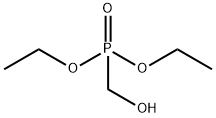Hydroxyethyl Cellulose , 3400~5000mpa.s,25℃ , 9004-62-0
Synonym(s):
‘Cellosize QP-40’;Hydroxyethylcellulose
CAS NO.:9004-62-0
Empirical Formula: C29H52O21
Molecular Weight:
MDL number: MFCD00072770
EINECS: 618-387-5
| Pack Size | Price | Stock | Quantity |
| 250G | RMB56.00 | In Stock |
|
| 1KG | RMB172.80 | In Stock |
|
| others | Enquire |
PRODUCT Properties
| Melting point: | 288-290 °C (dec.) |
| Density | 0.75 g/mL at 25 °C(lit.) |
| bulk density | 350kg/m3 |
| storage temp. | 2-8°C |
| solubility | H2O: ≤5 wt. % at 20 °C |
| form | powder |
| color | Light brown powder |
| Odor | Odorless |
| PH | pH(20g/l,25℃) : 5.0~8.0 |
| biological source | rabbit |
| Water Solubility | almost transparency |
| Merck | 14,4673 |
| Stability: | Stable. Incompatible with strong oxidizing agents, acid chlorides, acid anhydrides |
| InChIKey | CWSZBVAUYPTXTG-UHFFFAOYSA-N |
| SMILES | O1C(CO)C(OC2C(O)C(O)C(OC3C(OCCO)C(O)C(OC)C(CO)O3)C(COC3C(O)C(O)C(OC)C(CO)O3)O2)C(O)C(O)C1C |
| CAS DataBase Reference | 9004-62-0(CAS DataBase Reference) |
| EPA Substance Registry System | 2-Hydroxyethyl cellulose (9004-62-0) |
Description and Uses
Hetastarch, another nonproteinaceous colloid, is a complex mixture of ethoxylated amylopectins
ranging in molecular weight from 10 to 1,000 kDa (average molecular weight, ~450 kDa). When
infused as a 6% solution, hetastarch approximates the activity of human albumin. The larger
molecular weights, however, increase its intravascular residence time as well as its plasma
expansion effects relative to albumin.
Hetastarch is synthetically produced, so it is degraded more
slowly and is less antigenic than other colloids. Despite these advantages, hetastarch is quite
expensive and also has no oxygen-carrying capacity.
disintegrant, binder for tabletting
Safety
| Symbol(GHS) |  GHS07 |
| Signal word | Warning |
| Hazard statements | H319-H335-H315 |
| Precautionary statements | P264-P280-P302+P352-P321-P332+P313-P362-P264-P280-P305+P351+P338-P337+P313P |
| Hazard Codes | T |
| Risk Statements | 23/24/25-36/37/38 |
| Safety Statements | 26-36-45-24/25-22 |
| WGK Germany | 3 |
| RTECS | FJ5958000 |
| F | 3 |
| Autoignition Temperature | 725 °F |
| HS Code | 39123980 |
| Hazardous Substances Data | 9004-62-0(Hazardous Substances Data) |
| Toxicity | LDLo intravenous in women: 5100mg/kg/6D- |





